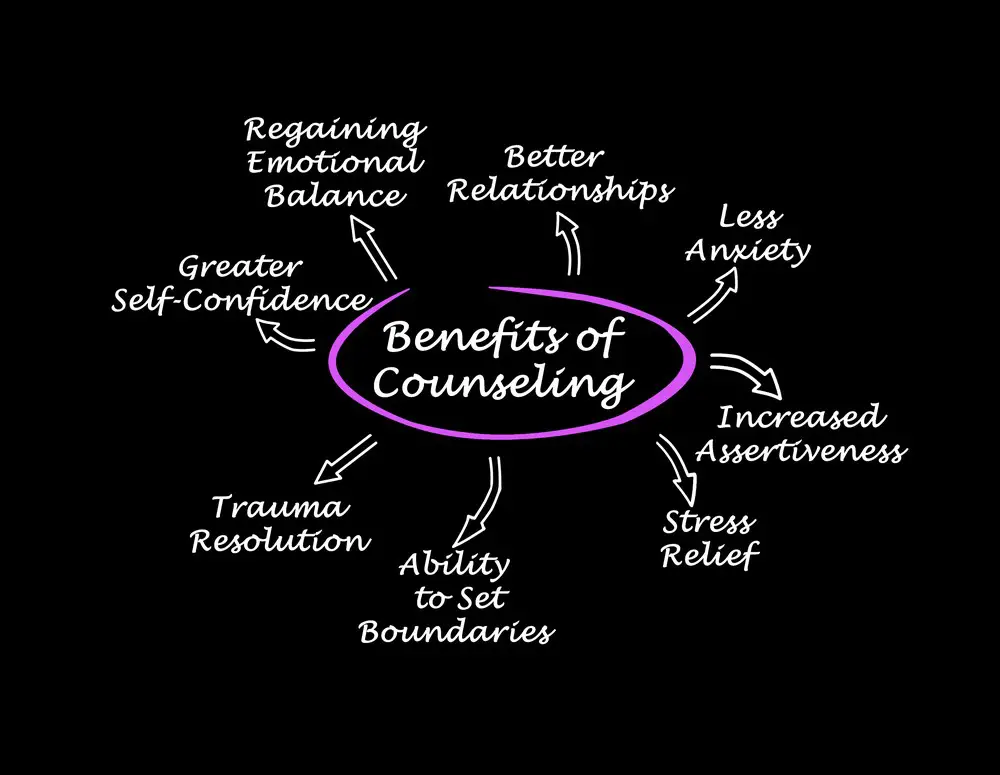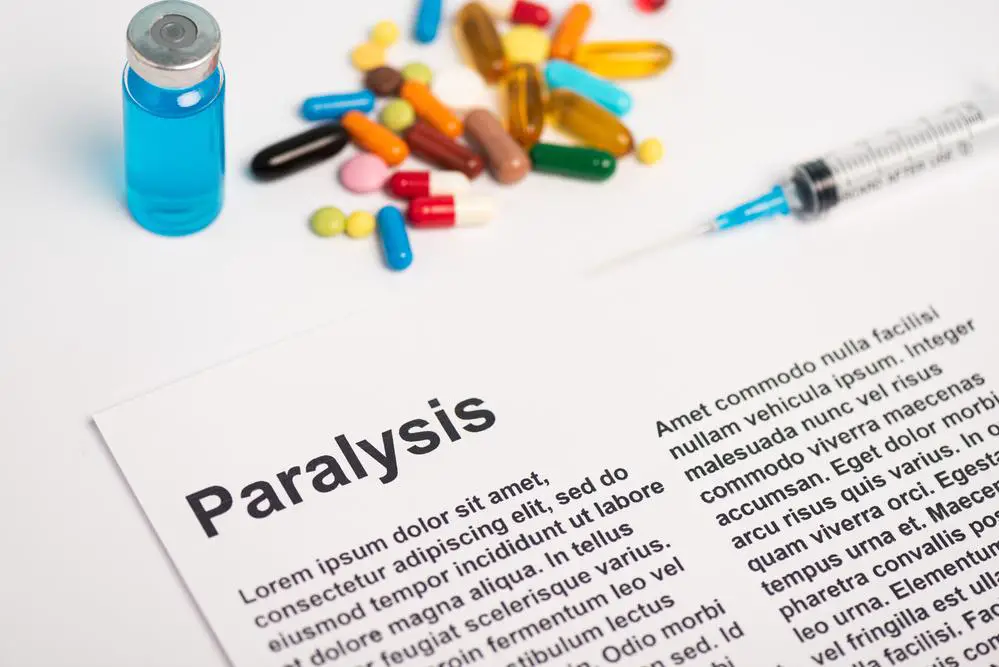As a BetterHelp affiliate, we receive compensation from BetterHelp if you purchase products or services through the links provided
Trauma-induced paralysis is a condition in which an individual experiences temporary or long-lasting immobility due to a traumatic event. This type of paralysis may be a result of physical or psychological trauma, and understanding its causes, symptoms, and possible treatments can significantly aid those affected by it. Trauma-induced paralysis is closely related to the brain’s fight, flight, or freeze response, as the body may involuntarily react to extreme stress by becoming immobile.
Different types of paralysis can occur in response to trauma, and these are generally categorized based on the severity and duration of the immobility. It is crucial to recognize the signs of trauma-induced paralysis and seek appropriate professional help to regain function and cope with the psychological aspects of the condition. Living with trauma-induced paralysis can present unique challenges, but with adequate support and understanding, individuals can learn to adapt and improve their quality of life. Delving into a guide to traumatic brain injury types provides a nuanced understanding of the complexities involved in trauma-induced paralysis, shedding light on the specific brain injuries that may lead to such debilitating conditions.
Key Takeaways
- Trauma-induced paralysis is a result of physical or psychological trauma and is linked to the brain’s fight, flight or freeze response.
- Recognizing the signs and seeking professional help can aid in regaining function and coping with the psychological aspects of the condition.
- With adequate support, individuals affected by trauma-induced paralysis can adapt and improve their quality of life.

Understanding Trauma-Induced Paralysis
Trauma-induced paralysis is a condition that can occur as the body’s response to a traumatic event. This phenomenon may involve multiple factors, including your brain’s reactive defense mechanisms and the sympathetic nervous system. Understanding the underlying causes can help manage and address this type of paralysis.
When you experience a traumatic event, your body’s natural defense mechanisms come into play. One of those mechanisms is the defense cascade, which includes various survival responses such as:
- Arousal: the initial awareness of danger
- Fight or flight: an active response to a threat
- Freezing: a short pause before engaging in fight or flight
- Tonic immobility (paralysis): a last resort when other defenses have failed
These responses are designed to help protect you from harm. However, in some cases, the freeze response can escalate to tonic immobility, which manifests as temporary paralysis.
The sympathetic nervous system is responsible for activating the defense cascade. It is crucial in managing your body’s reactions to stress, fear, and anxiety. When activated, it prepares your body for quick action, but in some cases, it can also push you into paralysis.
The tonic immobility is a natural way to protect you from further harm in extreme situations. An example is “playing dead,” which some animals use to deter potential predators. However, it can become problematic when it occurs in response to a traumatic event.
So, when coping with trauma-induced paralysis, consider the following:
- Understand the defense cascade and its role in triggering paralysis.
- Recognize the importance of the sympathetic nervous system in mediating these responses.
- Acknowledge that the freeze response and tonic immobility can be normal reactions to extreme stress but might also require intervention or support to overcome.
Types of Paralysis
 Focal Paralysis
Focal Paralysis
Focal paralysis is a type of paralysis that affects a specific region of your body, such as an arm, leg, or even your face. A localized injury or medical condition can cause this. For instance, monoplegia is a form of focal paralysis in which only one limb is affected. Recognizing the symptoms to seek proper treatment and manage the condition effectively is essential.
Multifocal Paralysis
In multifocal paralysis, multiple areas of your body are affected but not in a symmetrical pattern. This type may result from damage to the nervous system in different parts or as a side effect of certain diseases. Symptoms vary depending on the areas involved, including weakness, difficulty moving, or paresis (partial paralysis).
Hemiplegia
Hemiplegia is a type of paralysis that affects one side of your body, usually involving both the arm and the leg on the affected side. This type often occurs as a result of a stroke or brain injury. The severity of the paralysis depends on the extent of the damage. It is crucial to receive timely and appropriate treatment to minimize the long-term impact of the condition.
Paraplegia
Paraplegia is a form of paralysis that affects both legs and, in some cases, the lower part of the torso. Common causes of paraplegia include spinal cord injury or neurological disorders. When dealing with paraplegia, focusing on strengthening the unaffected muscles and exploring adaptive equipment to improve your mobility and quality of life is essential.
Quadriplegia
Quadriplegia, also known as tetraplegia, refers to the paralysis of all four limbs (two arms and two legs). This often results from a severe spinal cord injury or other neurological damage. Living with quadriplegia requires significant support and care to maintain a good quality of life. Proper rehabilitation and access to adaptive equipment can make a tremendous difference in managing day-to-day activities.
Causes of Trauma-Induced Paralysis
Trauma-induced paralysis can occur as a result of a variety of causes. Understanding these factors can help you be better informed about this medical condition.
- Traumatic Situations: The human body has a defense mechanism called tonic immobility, which can be triggered in response to a perceived threat. This can result in temporary paralysis as a self-preservation instinct.
- Traumatic Injury: Physical trauma to the brain, spinal cord, or nerves can cause paralysis. Common examples of traumatic injuries leading to paralysis include car accidents, falls, and sports injuries.
- Stroke: A stroke occurs when the blood supply to the brain is interrupted, leading to cell death and the potential for paralysis. Strokes are a significant cause of paralysis due to a blocked artery in the neck or brain, a clot, or a broken blood vessel.
- Spinal Cord Damage: Direct injury to the spinal cord can disrupt the communication between the brain and the rest of the body, resulting in paralysis. This can be due to fractures, dislocations, or compression from inflammation or tumors.
- Brain Tumor: A tumor in the brain can press on nerves that control motor function, leading to paralysis. The extent of the paralysis depends on the location and size of the tumor.
- Inflammation: Conditions such as multiple sclerosis can cause inflammation in the central nervous system, damaging nerve cells and leading to paralysis.
- Blood Clots and Hematoma: Blood clots can block blood vessels, reducing blood flow and oxygen delivery to the brain or spinal cord. A hematoma, or blood collection outside blood vessels, can compress nerve tissue and lead to paralysis.
Keeping these possible causes in mind can help you better understand the complexities of trauma-induced paralysis. Never hesitate to consult a healthcare provider if you suspect that you or someone you know may be experiencing paralysis as a result of trauma. Effective management and treatment depend on a timely and accurate diagnosis.
Symptoms, Diagnosis, and Treatment
Symptoms
Trauma-induced paralysis can present with various symptoms depending on the severity and the affected area. Some common symptoms include:
- Numbness or tingling: You may experience a lack of sensation or a pins-and-needles feeling of the affected body part.
- Muscle weakness: The weakened area may feel floppy or unresponsive to your attempts to move it.
- Loss of sensation: You may be unable to feel touch or other sensations in the paralyzed area.
- Pain: While paralysis is not usually associated with pain, it may still occur in some cases.
Diagnosis
If you suspect trauma-induced paralysis, it is essential to consult a medical professional for a proper diagnosis. They will likely examine your reflexes and perform various tests to determine the cause of your symptoms, such as:
- Physical examination: Assessing reflexes, muscle strength, and sensation.
- Imaging tests: Utilizing CT scans, MRIs, or X-rays to look for any abnormalities or injuries in the nervous system.

Treatment
Treatment for trauma-induced paralysis typically involves a combination of physical therapy, medications, and rehabilitation. Some effective treatment options include:
- Physical therapy: A therapist will help you regain strength and mobility in the affected area through targeted exercises and stretches.
- Medications: Your doctor may prescribe medications to manage pain, inflammation, or other symptoms of your condition.
- Rehabilitation: This may involve working with a team of professionals, like occupational therapists and speech therapists, to help you adjust to your new physical limitations.
- Prolonged exposure therapy and psychoeducation: These approaches may help address the psychological aspects of trauma-induced paralysis, helping you process and cope with the experience.
- Nutrition and exercise: A healthy diet and regular physical activity can assist your recovery and overall well-being.
Remember, working closely with your healthcare team to develop a tailored treatment plan that considers your individual needs and condition severity is crucial.
 Psychological Aspects of Trauma-Induced Paralysis
Psychological Aspects of Trauma-Induced Paralysis
One phenomenon that may result from a traumatic experience, such as sexual assault or childhood abuse, is trauma-induced paralysis. It often involves a person feeling physically or emotionally paralyzed, which can be both involuntary and deeply distressing. This type of paralysis is rooted in complex psychological factors.
While post-traumatic stress disorder (PTSD) and anxiety are common reactions to trauma, trauma-induced paralysis adds another layer of complexity. It’s important to understand that it is connected to the body’s survival mechanisms. When exposed to a traumatic event, your brain triggers the freeze response as a reaction to a perceived threat. For example, the freeze response can take various forms – tonic immobility, quiescent immobility, and collapsed immobility. Tonic immobility is when your body becomes rigid and unable to move, while quiescent immobility involves feeling stiffened but alert. Collapsed immobility, on the other hand, is when you’re unable to move due to extreme fear, helplessness, or exhaustion.
Another significant factor in trauma-induced paralysis is dissociation. This defense mechanism separates you from certain feelings, thoughts, or experiences that might otherwise become too overwhelming. Dissociation allows you to function despite the emotional turmoil that a traumatic event may cause. However, it can also hinder your ability to process and heal fully.
Mental health professionals, such as psychologists and psychiatrists, play an essential role in helping those experiencing trauma-induced paralysis. Through psychiatric consultation and therapy, individuals can begin to understand their reactions and work on healing. Assessing patients using methods like the Tonic Immobility Scale can help these professionals identify the extent of paralysis and tailor treatment plans.
Survivors of sexual assault and childhood abuse are particularly vulnerable to trauma-induced paralysis. They might experience intense feelings of guilt and shame, complicating their recovery. These survivors must reach out for professional help and work through these emotions to overcome the paralysis and regain control over their lives.
In summary:
- Trauma-induced paralysis is a complex psychological phenomenon rooted in the body’s survival mechanisms.
- Involving both PTSD and anxiety, trauma-induced paralysis is often experienced through various freeze responses, such as tonic immobility, quiescent immobility, and collapsed immobility.
- Dissociation is another significant factor that contributes to trauma-induced paralysis.
- Professionally tailored treatment plans and psychiatric consultation can help individuals understand, process, and overcome their trauma-induced paralysis.
- Survivors of sexual assault and childhood abuse are particularly vulnerable and may benefit from proactive psychological support.
The Role of Fight, Flight, or Freeze Response
In times of danger, your body enters a heightened state of arousal, which initiates the defense cascade. This is a series of physiological responses that help you react to potential threats. This process gives rise to the well-known fight or flight response and the lesser-known freeze response. Let’s examine how these reactions play out in trauma-induced paralysis.
Fight or Flight: When faced with a threat, your body releases adrenaline, which prepares you for action. In the fight or flight response, you either confront the threat head-on (fight) or attempt to escape it (flight). This heightened state makes your body more agile, increases your heart rate, and heightens your senses.
Freeze: The freeze response occurs when neither fight nor flight is viable, and your body is immobile. The freeze response can manifest itself as physical or emotional paralysis and is a common reaction in traumatic situations. It serves as a protective mechanism to prevent further harm.
Tonic Immobility: This phenomenon is considered an extreme form of the freeze response, in which the body becomes utterly immobilized while maintaining awareness. Tonic immobility can be observed in up to 50% of rape victims, demonstrating the impact of trauma on the body’s defense mechanisms.
As you navigate a dangerous or traumatic situation, it’s essential to remember that the fight, flight or freeze response is a natural part of your body’s defense cascade. While these reactions aim to protect you, understanding the details of each response can better prepare you to face life’s adversities.
Living with Trauma-Induced Paralysis
Trauma-induced paralysis can be a challenging condition to manage, but there are ways you can adapt and maintain a fulfilling life. As you learn to live with this condition, it’s essential to consider its impact on various aspects of your life, such as your hands, weakness, nerves, blood flow, and overall well-being.
One crucial aspect to focus on is maintaining and protecting your nerves and blood flow to minimize further damage. Engage in gentle exercises to help improve blood circulation and maintain the strength of unaffected muscle groups. Remember to consult your doctor or physical therapist for advice on appropriate exercises and activities for your unique situation.
Physical therapy and rehabilitation play vital roles in the recovery and adaptation process. These professionals can assess your needs and develop personalized therapy plans, incorporating exercises to strengthen muscles, improve range of motion, and prevent joint stiffness. Your therapist will likely introduce techniques to enhance your independence and the ability to manage daily tasks.
Another essential practice is caring for your hands, which are critical in everyday tasks. Be mindful of any weakness in the hands and take preventative measures to avoid further complications. This may involve using adaptive equipment or modifying your routines to accommodate your current abilities and maintain hand functionality.
Staying informed about ongoing clinical trials and emerging treatment options can be beneficial, too. Keep in touch with your healthcare team, as they can provide updates about any relevant research developments or potential treatment alternatives. Additionally, they may be able to guide you toward any suitable clinical trials.
As you adapt to living with trauma-induced paralysis, keep these strategies in mind:
- Engage in gentle exercise to improve blood flow and protect nerves
- Seek professional support from physical therapists and rehabilitation experts
- Protect and maintain the functionality of your hands
- Stay updated on clinical trials and emerging treatment options.
Overall, living with trauma-induced paralysis can be a challenging journey. Still, with the right strategies and support, you can manage your condition and live a meaningful and independent life. Stay proactive in seeking help and information, and always prioritize your well-being.
Concluding Thoughts
Trauma-induced paralysis, also known as the freeze response, is a natural defense mechanism when confronted with a threatening situation. It’s essential to acknowledge that experiencing this type of paralysis is a normal response to trauma, and you’re not alone in this.
Developing an understanding of your body’s reactions to stress and trauma can be incredibly helpful in managing the symptoms and coping with the aftermath of the event. It’s crucial to seek support from friends, family, or professionals who can help you process your emotions and provide guidance through the healing journey.
Furthermore, implementing self-care strategies can be a beneficial aspect of recovery:
- Prioritize your mental and emotional well-being.
- Practice relaxation techniques such as deep breathing or mindfulness exercises.
- Establish a routine with proper sleep, nutritious meals, and regular exercise.
- Seek counseling or therapy to help address underlying emotions and trauma.
By acknowledging your feelings and gaining knowledge about trauma-induced paralysis, you’re taking an essential step toward healing and regaining control of your life. Remember, it’s okay to be vulnerable and seek help – your journey toward recovery is worth every effort.
Frequently Asked Questions
What are common symptoms of trauma-induced paralysis?
Common symptoms of trauma-induced paralysis include:
- Complete or partial weakness of the affected body part
- Loss of muscle function
- Inability to move the affected limb or body part
- Possible sensory loss in the affected areas.
Remember, these symptoms can vary depending on the severity, location, and type of paralysis.
Can emotional trauma lead to temporary paralysis?
Yes, emotional trauma can potentially lead to temporary paralysis, known as conversion disorder or functional neurological symptom disorder. This occurs when emotional distress manifests itself as physical symptoms, including temporary paralysis.
Does PTSD have a role in causing paralysis?
PTSD, or post-traumatic stress disorder, can contribute to temporary or functional paralysis indirectly. Symptoms of PTSD, such as flashbacks, intense anxiety, or vivid memories, can trigger physical reactions, including temporary paralysis.
What is tonic immobility in relation to trauma?
Tonic immobility is a natural response to a perceived threat or trauma. It is part of the human defense mechanism, characterized by:
- Feeling frozen or unable to move
- Being conscious but unable to respond physically
- Experiencing reduced heart rate and blood pressure
Tonic immobility can occur during or after a traumatic event and may last for a short period or longer, depending on the individual’s response to the trauma.
How does trauma affect the autonomic nervous system?
Trauma affects the autonomic nervous system in several ways, including:
- Activation of the fight or flight response, increasing heart rate and blood pressure
- Triggering the freeze response (tonic immobility), disrupting normal body functions
- Causing stress hormones, like cortisol and adrenaline, to flood the body
These physiological responses can lead to various physical and psychological symptoms, including paralysis.
What is the connection between hormones and trauma-induced paralysis?
Hormones such as cortisol, adrenaline, and norepinephrine play a crucial role in the body’s response to trauma. Excessive production of these hormones during a traumatic event can lead to:
- Increased blood flow to the muscles
- Impairment of the immune system
- Disruption of normal brain function
This hormonal imbalance can contribute to trauma-induced paralysis, as it may affect the communication between the brain, spinal cord, and muscles, resulting in impaired muscle function or partial/complete paralysis.
- 7 Ideas to Help You Relax and Unwind on a Family Vacation - April 27, 2025
- How Having Cybersecurity Protection Helps You Relax - April 25, 2025
- 8 Reasons Why Spending Time Outside Calms You Down - April 25, 2025
This site contains affiliate links to products. We will receive a commission for purchases made through these links.


 Focal Paralysis
Focal Paralysis Psychological Aspects of Trauma-Induced Paralysis
Psychological Aspects of Trauma-Induced Paralysis
